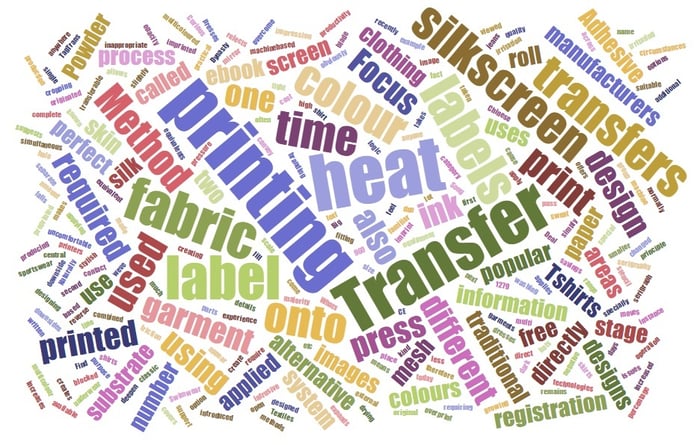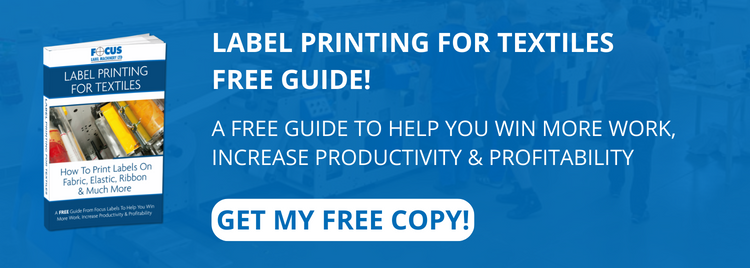
There are some circumstances in which fabric garment labels are simply not practical. Swimwear is an example of where an external label would be irritating and inappropriate. A lot of other sportswear falls into the same category. These garments are often tight fitting and come into direct contact with the skin. When combined with sweat and friction through use, fabric labels can feel uncomfortable and cause irritation to the skin. Heat transfer label printing offers an alternative to using fabric labels in a range of clothing, an option that is being taken up by a growing group of manufacturers. These days, heat transfer labels are cropping up in underwear, hats, jeans, shirts, skirts and dresses - in fact anywhere that a traditional fabric label would normally be used.
What’s the Big Deal with Heat Transfers?
Heat transfer labels convey the same information as their fabric equivalents – branding, washing information, size details etc. They are printed directly onto the fabric. The process will be familiar to anyone who has experience creating T-shirts. The majority of printed T-shirts use some kind of heat transfer method to imprint the design onto the shirt. The same logic applies to labels, but obviously on a much smaller scale. The equipment required and the method used is therefore slightly different. So why are they so popular? Not only does heat transfer label printing create a stylish design that is less intrusive than a fabric equivalent, but there are also savings in both cost and time to be made.
How Heat Transfers are Used
Heat transfer printing takes place in two parts. In the first stage, the design is printed as a negative onto special heat transferable paper. The images and text will appear on the paper as a reverse image as if viewed through a mirror. In the second stage, the transfer is imprinted onto the garment using heat and pressure in a printing press, specially designed for the purpose.
Silkscreen Printing
The classic means of applying heat transfers is known as silk screen printing, also called serigraphy or serigraph printing by some manufacturers. The machine-based silkscreen printers of today are based on a traditional Chinese method of printing that originated during the Song Dynasty (960 -1279 CE). Naturally the process has changed over time but the principle remains.
Silkscreen printing uses a mesh to transfer printing ink onto a substrate, one colour at a time. The areas that do not require printing are blocked out by stencil. The ink is applied through a blade which moves across the substrate to fill the open areas of the mesh with ink.
The downside of silkscreen heat transfer label printing is that it can only print one colour at a time , requiring drying before the next colour can be applied. This makes it perfect for one or two colour designs, but not suitable for multi-coloured images, due to the amount of time required for the print operation. Silkscreen printing also creates a high percentage of rejects with registration issues between colours.
The Focus Heat Transfer Label Printing Method (TagTrans)
At Focus, we’ve overcome these downsides by designing a roll to roll, multicolour print press that allows simultaneous printing in a number of different colours. Our machine uses a central impression press and powder adhesive to apply the complete transfer in a single pass. Where increased opacity is required, for instance on dark clothing. An additional silk screen can be used to deepen the quality of the print. Our heat transfer printing presses have a separate silkscreen system that can overprint the original designs in perfect registration with the pre-printed Transfer. Focus introduced its ‘In line’ Powder Adhesive system to support production of ‘halo free’ Transfers . This increases productivity and expands the options available to you when producing multi colour heat transfers.
Curious to Find Out More?
We have recently written an e-book called ‘Label Printing for Textiles’, which, as the name suggests, covers the methods and technologies involved with label printing from a number of different angles. We have included a chapter on heat transfers, as this is an increasingly popular alternative to using fabric labels in the garment industry. You can click here to download the e-book for free directly from our website.







